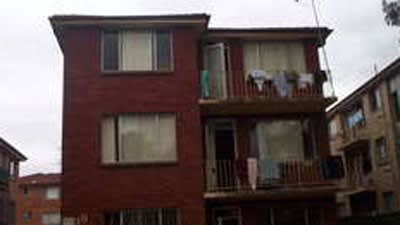How a simple conversation sparked a property addiction
It was the height of the boom in 2004, and as we walked our little girls around Glenwood, watching new houses being built, we discussed whether they will ever be able to afford a house when they grow up. In our suburb alone, prices were conservatively in the high $600,000s. During this walk we had a discussion that changed our lives. John knew a fellow policeman who was investing in property – so if they could do it on a policeman’s wage, why couldn’t we?
Not long after this conversation, on my regular train commute to work, my thoughts were consumed with property. I looked up and saw a ‘for sale’ sign on a property that was located literally opposite the Harris Park train station.
When I tried to search for that particular property on the internet, I couldn’t find it, but the first listing that popped up grabbed my attention. It was in dire need of help – bright blue, smoke-grimed walls, crappy carpet and hodge-podge kitchen – and it was cheap at $190,000.
At the time, prime-time TV was all about renovation rescue shows and I was caught up in the hype of it all. I thought, “Let’s go and renovate!” It wasn’t the thought of making lots of money that was driving me – just the idea of renovating.
I just really wanted to buy something and when I viewed the property, I saw the renovation potential. I perused the local newspapers to see how many other properties were on offer in that price range and to see how much a one-bedroom unit rented for. There wasn’t much to go by, so I called the agent to view the property and subsequently made an offer of $180,500, and it was accepted.
Before I put any money down, though, I had to convince John that it was a good buy. He came down and viewed the unit. I don’t think he was that enthused – he knew I just wanted to buy something for the sake of buying something. Still, he gave me the green light. Even my mortgage broker tried to talk me out of it, but I was adamant: this was going to be our first step towards financial freedom through property investing. I just knew it!
So where did we go wrong?
This renovation-rescue, one-bedroom unit was under 50 square metres, which made it more difficult to secure funding. Banks prefer to see properties that are at least 50m2 in size, as it means that a wider pool of people – including singles and couples – could potentially live in the property. We paid approximately $2,500 in lender’s mortgage insurance for the privilege of buying under 50m2. It was also in a 1970s red brick building and we purchased at the top of the
We spent $5,000 on renovations, including replacing carpet, painting, light fittings and kitchen cupboard handles. John’s nightmare renovation task was to the paint the very 70s vermiculite ceiling – as he learnt, that stuff has limitless potential to soak up paint and our money.
As it turned out, it wasn’t the most astute investment decision we could have made. Over the past five years, the property actually decreased in value by about $5,000 – even with the renovations. Only in the past six months have we seen capital growth. But every cloud has a silver lining and in this instance, our mistakes have been softened by the property’s strong performance in the rental market. It’s always had good tenants and it takes care of itself, so we don’t have to think about it. Utopia would be for a developer to knock the whole block down, so there could be further potential there.
The facts
Purchase Price 2004 | Current value 2010 | Rental start | Rental current | Yield current |
$180,500 | $200,000 | $150 | $290 | 8.35% |
This is an exerpt from Journeys Along the Property Path: 12 real life stories of 12 property investors, published by Inspirational People in Property. Two of the authors are fighting breast cancer, and IPIP has aligned with the McGrath Foundation to raise money to fund McGrath breast care nurses in communities across Australia and raise awareness of breast cancer, particulary among young women. The initiative aims to sell 9,000 books to raise $90,000 to support the McGrath Foundation.
